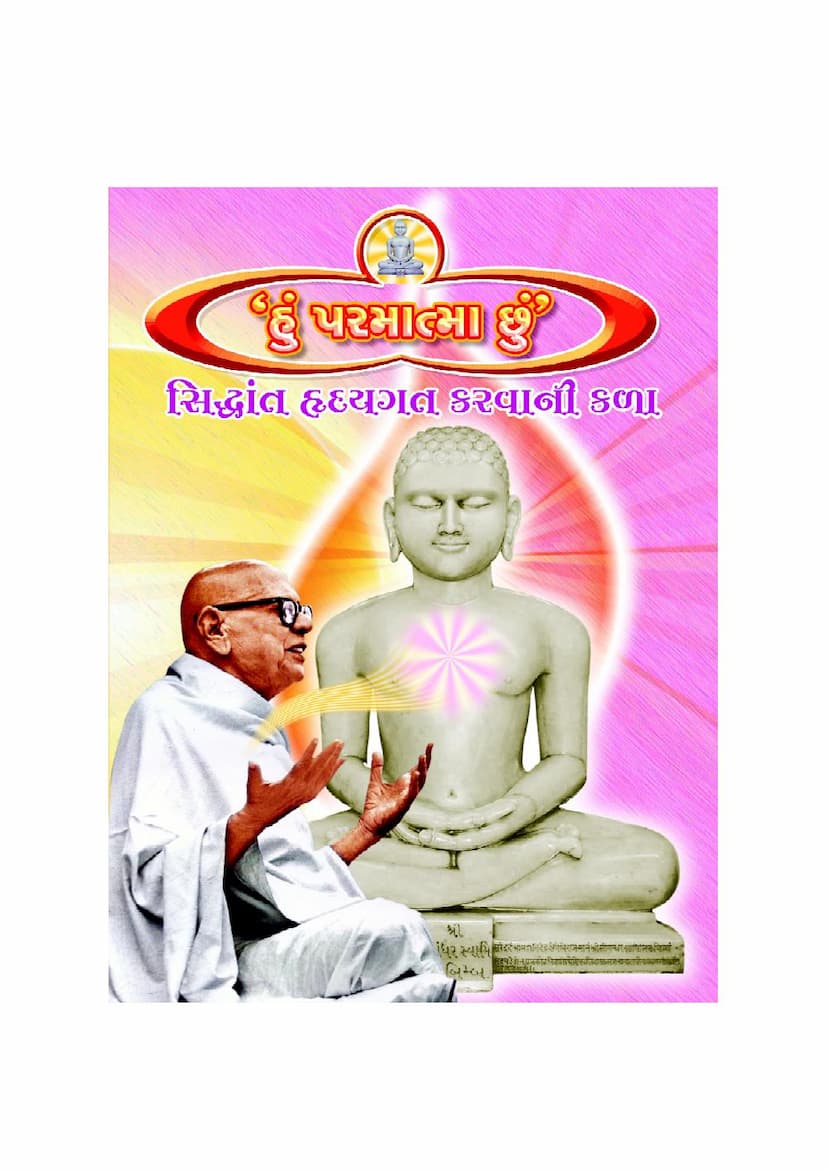Hu Parmatma Chu
Added to library: September 1, 2025

Summary
The book "Hu Parmatma Chu" (I am the Supreme Soul) by Subhash Sheth, published by USA Jain Swadhyay Mandir Songadh, USA, is a comprehensive guide to understanding and internalizing the Jain principle of the soul's inherent divine nature. The book aims to lead the reader towards the realization of their own soul's (Atma) supreme essence, emphasizing that the soul itself is inherently divine, or "Parmatma" (Supreme Soul).
Here's a breakdown of the key themes and content based on the provided text:
Core Principle: "Hu Parmatma Chu" (I am the Supreme Soul)
- The book's central tenet is the profound realization that the essence of every living being is divine and inherently perfect, identical to the state of a liberated soul (Parmatma). This is not merely a philosophical concept but a state of being that can be realized through dedicated spiritual practice.
- The title itself, "Hu Parmatma Chu," is presented as a foundational principle, the "Shirmoor" (crown jewel) of all Jain principles. It encompasses and underlies all other Jain doctrines.
- The book advocates for the realization of this divine nature as the path to liberation (Moksha). It argues that the greatest error of the soul is the denial of its own divine nature.
Key Themes and Concepts:
- Holistic Principle (Sarvagrahi Siddhant): "Hu Parmatma Chu" is not just one principle among many but a comprehensive one that integrates all other Jain philosophical tenets. Understanding this principle is crucial for any spiritual progress.
- Rejection of the False Self: The book emphasizes that identifying with the physical body, senses, and worldly possessions is the primary source of suffering (Dukh). The core of spiritual practice is to shed these false identifications and recognize the soul's true nature.
- The Art of Internalizing the Principle: The book's title in Gujarati implies that it's not just about understanding the principle intellectually but about truly internalizing it. This involves a process of contemplation, self-reflection, and practice.
- Emphasis on Gurudev Shree Kanji Swami: The text highlights the significant role of Gurudev Shree Kanji Swami in popularizing this principle. His teachings and challenges are presented as instrumental in bringing this understanding to the forefront.
- The Soul's True Nature: The book delves into the inherent qualities of the soul, such as independence (Dravya ni Swatantrata), completeness of nature (Swabhav ni Sampurnata), right-knowledge being distinction (Bhedgnan e Samyagnyan), non-attachment (Vitaragta) as religion, right-faith as the root of religion, the path to liberation as the path of understanding, non-action towards external objects, and independence from causal influences.
- The Path to Realization: The book outlines a step-by-step process for internalizing the "Hu Parmatma Chu" principle. This involves:
- Understanding the principles of Tattvagnan (Real Knowledge).
- Grasping the essence of these principles (Hrudayagatpanu).
- Overcoming Moha (delusion) and attachment.
- Developing the necessary virtues and mental disposition (Patrata).
- Engaging in a structured approach to study and contemplation.
- The Importance of Self-Evaluation: The book includes self-assessment tools to help readers gauge their progress in understanding and internalizing the "Hu Parmatma Chu" principle.
- Practical Application: The book aims to guide readers towards manifesting their divine nature and achieving the state of Parmatma.
- Structure of the Book: The book is structured into chapters, each exploring different facets of the "Hu Parmatma Chu" principle, including:
- Chapter 1: "Hu Parmatma Chu" - A Comprehensive Principle.
- Chapter 2: "Hu Parmatma Chu" - How? (Exploring the path through Dravyadrushti).
- Chapter 3: "Hu Parmatma Chu" - Eligibility for internalization.
- Chapter 4: "Hu Parmatma Chu" - The method to internalize the principle.
- Chapter 5: "Hu Parmatma Chu" - The sequence of internalization.
- Chapter 6: "Hu Parmatma Chu" - Reasons for not being able to internalize.
- Chapter 7: "Hu Parmatma Chu" - The fruit of internalization.
In essence, "Hu Parmatma Chu" serves as a spiritual roadmap, guiding individuals through the process of self-discovery and self-realization, leading them to recognize their inherent divinity and ultimately achieve liberation. The book advocates for a deep understanding and internalization of this fundamental truth, supported by the teachings of revered Jain gurus.